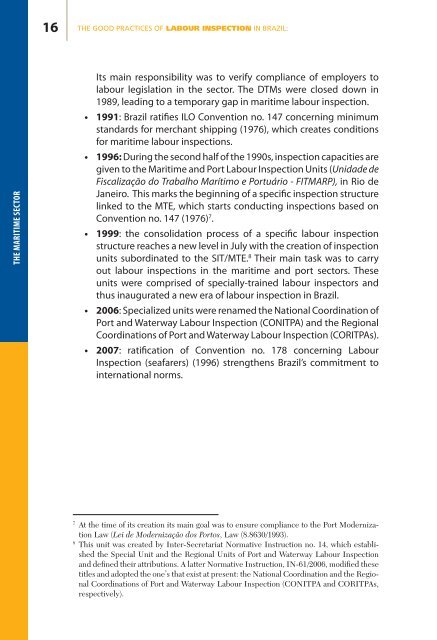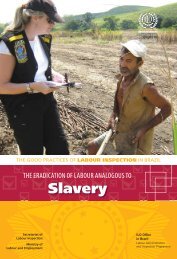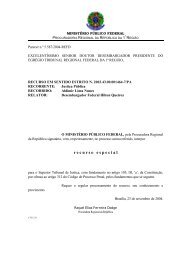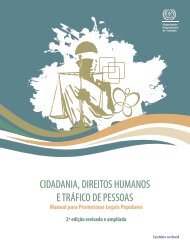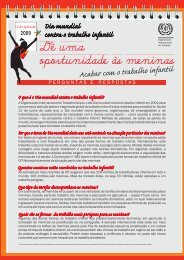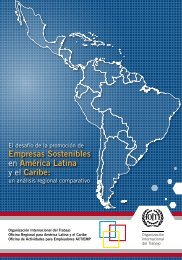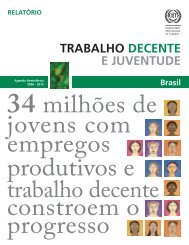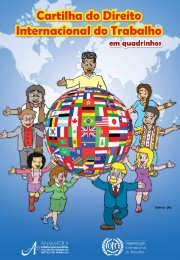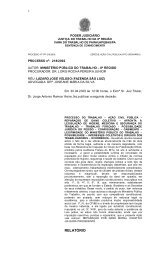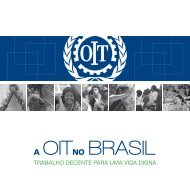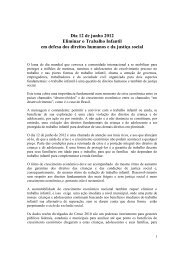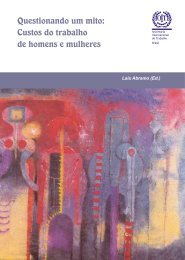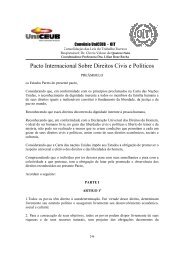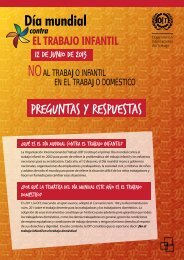The Maritime Sector
The Maritime Sector
The Maritime Sector
Create successful ePaper yourself
Turn your PDF publications into a flip-book with our unique Google optimized e-Paper software.
16THE GOOD PRACTICES OF LABOUR INSPECTION IN BRAZIL:THE MARITIME SECTORIts main responsibility was to verify compliance of employers tolabour legislation in the sector. <strong>The</strong> DTMs were closed down in1989, leading to a temporary gap in maritime labour inspection.• 1991: Brazil ratifies ILO Convention no. 147 concerning minimumstandards for merchant shipping (1976), which creates conditionsfor maritime labour inspections.• 1996: During the second half of the 1990s, inspection capacities aregiven to the <strong>Maritime</strong> and Port Labour Inspection Units (Unidade deFiscalização do Trabalho Marítimo e Portuário - FITMARP), in Rio deJaneiro. This marks the beginning of a specific inspection structurelinked to the MTE, which starts conducting inspections based onConvention no. 147 (1976) 7 .• 1999: the consolidation process of a specific labour inspectionstructure reaches a new level in July with the creation of inspectionunits subordinated to the SIT/MTE. 8 <strong>The</strong>ir main task was to carryout labour inspections in the maritime and port sectors. <strong>The</strong>seunits were comprised of specially-trained labour inspectors andthus inaugurated a new era of labour inspection in Brazil.• 2006: Specialized units were renamed the National Coordination ofPort and Waterway Labour Inspection (CONITPA) and the RegionalCoordinations of Port and Waterway Labour Inspection (CORITPAs).• 2007: ratification of Convention no. 178 concerning LabourInspection (seafarers) (1996) strengthens Brazil’s commitment tointernational norms.7At the time of its creation its main goal was to ensure compliance to the Port ModernizationLaw (Lei de Modernização dos Portos, Law (8.8630/1993).8This unit was created by Inter-Secretariat Normative Instruction no. 14, which establishedthe Special Unit and the Regional Units of Port and Waterway Labour Inspectionand defined their attributions. A latter Normative Instruction, IN-61/2006, modified thesetitles and adopted the one’s that exist at present: the National Coordination and the RegionalCoordinations of Port and Waterway Labour Inspection (CONITPA and CORITPAs,respectively).


